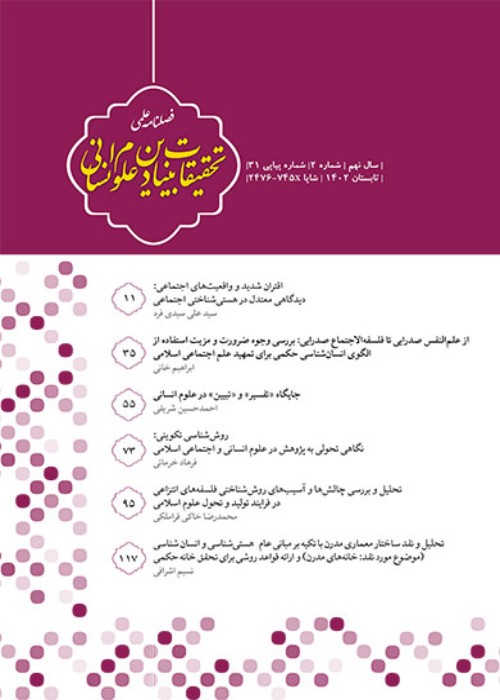Identifying School Architectural Design Criteria Based on Mulla Sadra's Theory of Substantial Motion as an Effective Factor in the Formation of Human Identity (A Case Study of Five Contemporary Schools in Iran)
The architecture of the school can be considered as a place where the students are educated. Thus, not paying attention to the Islamic theoretical foundations while emphasizing the knowledge of man, his needs, and transcendent goals of education may lead to challenges in addressing the potential capabilities of the school environment as a space for shaping human identity. Since the mission of philosophy is to address the principles and foundations of various issues and analyzes them comprehensively, the present study aimed to identify the school architectural design criteria considering Mulla Sadra's theory of substantial motion. It focused on recognizing the levels of perfection of the human soul and his becoming when achieving the position of a perfect human in the context of education. The importance of the issue of education in transcendental wisdom, and especially the theory of substantial motion, is concerned with the essence of human existence. Hence, education requires inherent changes in human beings. In the present study, the architectural design features of five contemporary elementary schools in Iran were examined to evaluate the extent to which architects pay attention to the education of students according to the criteria of the philosophy of Islamic education. The method used in this research was logical reasoning with a descriptive-analytical approach. The results showed that the architecture of educational spaces should be designed with an emphasis on the characteristics that the desired school should have in accordance with the levels of human soul perfection, the conditions and requirements of time and place, and the needs of educators. Among the indicators considered in the studied cases, we can refer to 1) architecture in harmony with the collective identity and the space away from any arrogance and ostentation; 2) comprehensiveness of design, equipment, and technologies provided in response to the practical needs of educators and not restricting the learning environment to the classroom; 3) designing spaces considering the psychological characteristics and gender of learners while taking into account the flexibility of the space; 4) providing suitable grounds for enhancing imaginal power as well as the creativity of educators; and 5) creating physical models for school buildings based on the principles of sustainable development, land use planning, climatic-regional conditions, and traditional principles of Iranian architecture. The application of these indicators can facilitate the growth and development of students based on the philosophy of Islamic education.
- حق عضویت دریافتی صرف حمایت از نشریات عضو و نگهداری، تکمیل و توسعه مگیران میشود.
- پرداخت حق اشتراک و دانلود مقالات اجازه بازنشر آن در سایر رسانههای چاپی و دیجیتال را به کاربر نمیدهد.


